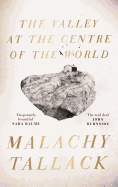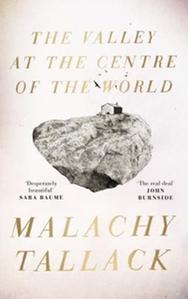
 To many people, Shetland is the end of the world: a cold, isolated archipelago off the northeastern coast of Scotland. But to its residents, many of them tied to the land by generations of family history, it's the center: not of urban activity or modern development, certainly, but of their own particular, quiet lives. In his debut novel, The Valley at the Centre of the World, Scottish writer Malachy Tallack brings Shetland and a handful of its residents to life, tracing their movements on, through and around the titular valley.
To many people, Shetland is the end of the world: a cold, isolated archipelago off the northeastern coast of Scotland. But to its residents, many of them tied to the land by generations of family history, it's the center: not of urban activity or modern development, certainly, but of their own particular, quiet lives. In his debut novel, The Valley at the Centre of the World, Scottish writer Malachy Tallack brings Shetland and a handful of its residents to life, tracing their movements on, through and around the titular valley.Tallack (Sixty Degrees North) begins his narrative with Sandy, a young man who settled in the valley with his girlfriend, Emma, but lingers there even after their relationship ends and she moves south. His nearest neighbor and friend is David, Emma's father, a quiet man who carries the history of the valley in his bones. David and his wife, Mary, form the backbone of the tiny community of the valley. Sandy helps David with sheep-shearing and other tasks, learning the ways of crofting and eventually moving into a house of his own. Meanwhile, the cast of characters expands to include Terry, a sometime drunk who lives down the road; Alice, a novelist who moved to the valley after her husband's death; Maggie, the valley's eldest resident; and Liz, Sandy's mum, who appears on his doorstep after many years of sporadic contact. Their lives intertwine partly for reasons of geography, but partly because the valley engenders community: in its spare, rugged landscape, human interaction becomes a necessity.
Like many rural communities, the valley is home to a disappearing way of life: small farmers and crofters find it increasingly hard to make a living, and young people are drawn south to the mainland and its opportunities. Tallack chooses not to pontificate or proselytize about the dangers of industry or the threats to small villages. Instead, he paints a loving portrait in miniature of the valley and its inhabitants. Alice attempts a similar task with her latest writing project (which shares its title with Tallack's novel): a detailed natural history of the valley, which (she is finally forced to acknowledge) can never be entirely complete. Most of the characters speak in the local dialect, which is jarring at first, but gradually becomes part of the novel's fabric. The plot tends to meander instead of proceeding in any linear fashion, and though certain points eventually move toward resolution, others simply are. Perhaps that's the most compelling argument for both Shetland and Tallack's rendering of it: they simply are, and in their rich, layered existence lies great beauty. --Katie Noah Gibson, blogger at Cakes, Tea and Dreams
Shelf Talker: Scottish writer Malachy Tallack paints a quiet, lyrical portrait of the Shetland Islands in his first novel.

